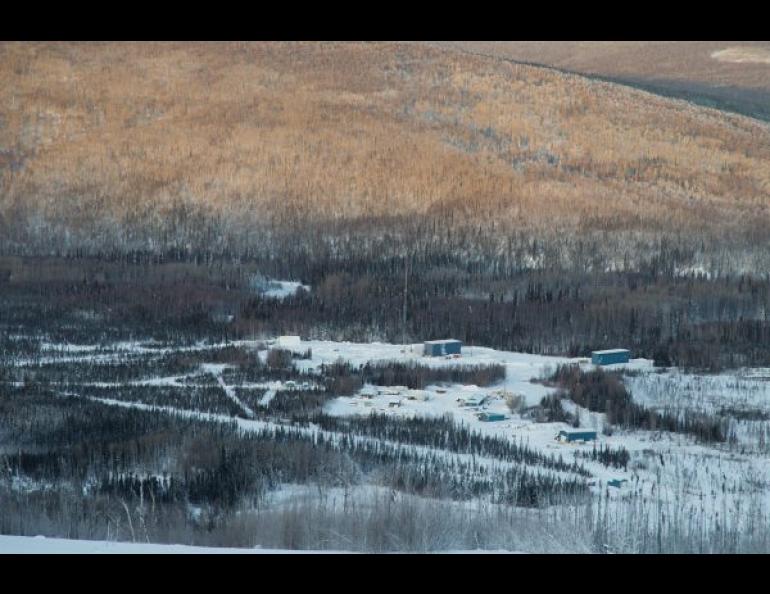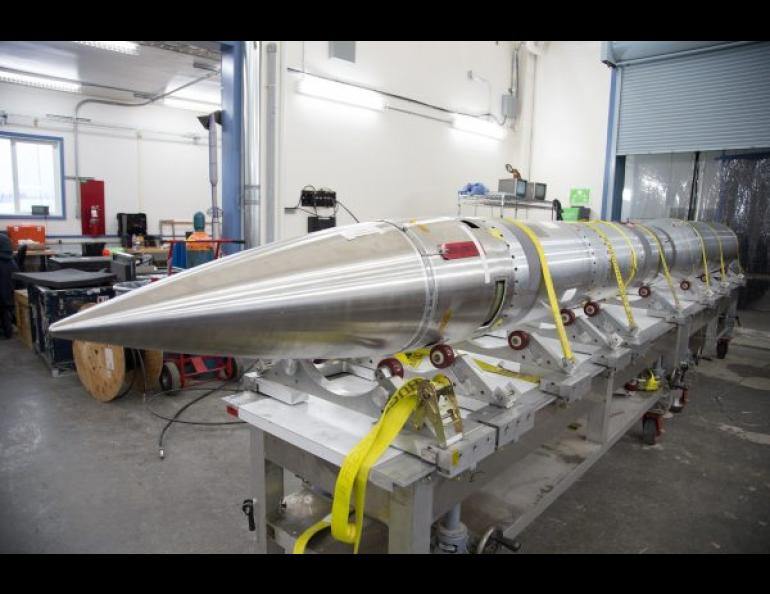

NASA sounding rockets to launch from Poker Flat Research Range
A NASA sounding rocket campaign starts Jan. 20 and will run through early March at the Poker Flat Research Range in Alaska. The research rockets will support the effort to better understand the space that surrounds Earth — awareness needed as humans seek to explore beyond our home planet.
Poker Flat Research Range is owned and operated by the University of Alaska Fairbanks Geophysical Institute, under contract to NASA’s Wallops Flight Facility, which is part of the Goddard Space Flight Center. This year, three missions, including five separate launches, will explore the Earth’s magnetic environment and its impact on the upper atmosphere and ionosphere.
The 2017 Alaska sounding rocket campaign could begin as early as 5:30 a.m. Friday, Jan. 20, with the launch of a mission called Polar Night Nitric Oxide, or PolarNOx, to study Earth’s atmosphere in the polar region.
“The aurora creates nitric oxide, but in the polar night there is no significant process for destroying the nitric oxide,” said Scott Bailey, the principal investigator of the mission from Virginia Tech, Blacksburg. “We believe it builds up to large concentrations. The purpose of our rocket is to measure the abundance and altitude of peak abundance for the nitric oxide.”
“Nitric oxide under appropriate conditions can be transported to the stratosphere where it will catalytically destroy ozone,” Bailey said. Those changes in ozone can lead to changes in stratospheric temperature and wind and may even affect the circulation at Earth’s surface.
The primary instrument of PolarNOx is a ultraviolet spectrograph. As the payload ascends to its approximately 173-mile apogee and begins its descent back to Earth the spectrograph is pointed at a star on the horizon. “Attenuation of the starlight by nitric oxide is used to obtain a nitric oxide altitude profile,” said Bailey.
The instrument will fly on a 57-foot-long Black Brant IX sounding rocket with a launch window that runs from Jan. 19 through Jan. 31. The launch window each day is 60 minutes and begins at about 5:30 a.m. Alaska time.
PolarNOx will be followed by two missions that will study the interaction of the solar wind, the magnetosphere, Earth’s upper atmosphere and the structure of the resulting aurora. The magnetosphere is the region of Earth’s magnetic field where solar energy is stored and processed. The release of this energy drives aurora.
The launch window for both missions is Feb. 13 through March 3, and each will be conducted during auroral activity.
The second mission, called Neutral Jets in Auroral Arcs, is led by principal investigator Rob Pfaff, a scientist at NASA’s Goddard Space Center in Greenbelt, Maryland.
“Electric fields drive the ionosphere which, in turn, are predicted to set up enhanced neutral winds within an aurora arc,” Pfaff said. “This experiment will seek to understand the height-dependent coupling processes that create localized neutral ‘jets’ within the aurora and their associated heating and neutral structuring.”
For this mission, two 56-foot-long Black Brant IX rockets will be launched nearly simultaneously. One rocket is expected to fly to an apogee of about 107 miles, while the other is targeted for a 201-mile apogee. Flying the two similar payloads simultaneously to different altitudes will provide researchers a vertical profile of the measurements within an aurora.
The third mission, called Ionospheric Structuring: In Situ and Groundbased Low Altitude StudieS, or ISINGLASS, will include the launch of two rockets with identical payloads that will fly to approximately 218 miles altitude into two different types of auroras: an inverted-V arc and a dynamic Alfenic curtain. Thus, they may not be launched on the same night.
“The visible light produced in the atmosphere as aurora is the last step of a chain of processes connecting the solar wind to the atmosphere,” said Kristina Lynch, ISINGLASS principal investigator from Dartmouth College in Hanover, New Hampshire. “We are seeking to understand what structure in these visible signatures can tell us about the electrodynamics of processes higher up.”
The ISINGLASS launches will occur between 1 and 7 a.m. EST, or 9 p.m. and 3 a.m. in Alaska.
ON THE WEB: A live stream of the launch the morning of January 20 will be linked from the UAF Geophysical Institute Facebook page, https://www.facebook.com/UAF.GI/
Sue Mitchell, University of Alaska Fairbanks Geophysical Institute, 907-474-5823, sue.mitchell@alaska.edu
Don Hampton, University of Alaska Fairbanks Geophysical Institute, 907-455-2256, dhampton@alaska.edu
Keith Koehler, NASA Wallops Flight Facility, keith.a.koehler@nasa.gov






